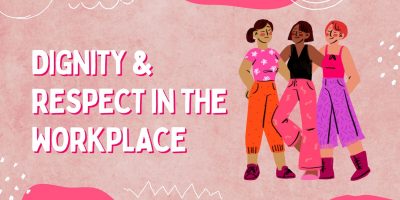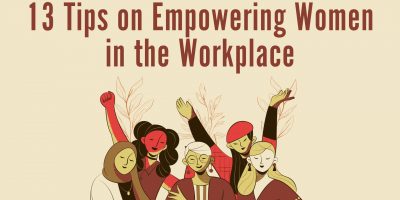
60+ Wage Gap Statistics in 2024: Gender & Racial Gap
Uncover wage gap statistics, highlighting the persistent inequality faced by minority workers and women, emphasizing the urgent need for transformative change in the workforce.

It’s no secret that the history of women in the workplace is long and, at times, tedious. Ever since women entered the labor market, they have had to take a stand against gender-based disparities.
Fortunately, because of all the strides they have taken, today’s landscape is vastly different. Many organizations are now embracing diversity initiatives that promote gender equality in hiring practices and salary negotiations, giving women the opportunities to gain more meaningful employment opportunities than ever before.
However, there is still a long way to go on this journey toward true parity between genders. Unfortunately, the WEF estimates that it’s going to take more than a century until the wage gap closes.
Hence, while progress has been made over time that offers hope for a brighter future, there is still a lot more we can do to achieve true gender equality in the workplace.
In the history of women in the workplace, gender inequality is not an issue of modern times.
It began in the 19th century, when in 1872, Belva Ann Lockwood, member of the American Woman Suffrage Association, convinced the US Congress to pass an equal pay law ensuring equal pay for women working as federal employees.
Unfortunately, this didn’t seem to change much, so women had to continue fighting for equality.
With the ratification of the 19th mendment to the Constitution of the United States of America in 1920, women finally gained political rights. This was the time to introduce an additional Amendment guaranteeing equal rights for both genders.
However, it took both houses 50 years to pass the Amendment in 1972, and an additional ten years passed before it got ratified in 1982.

The Equal Pay Act of 1963 barred companies from paying women less than men for occupations that demanded the same abilities and duties. The Act, in contrast to the 1872 equal pay rule, applied to the entire workforce, not just the federal government.
However, it did permit uneven pay to honor seniority, superior merit, and other similar characteristics as long as it wasn’t based on gender.
Later, the 1964 Civil Rights Act forbade discrimination on the grounds of “race, color, religion, sex, or national origin.” According to Title VII of the legislation, the protections also applied in the workplace, specifically for companies with 15 or more employees.
Yet, despite so many laws being enacted, the fight for gender equality still rages on in the 21st century.
Sexism in the history of women in the workplace has always been present.
The fact is, there have always been less women than men in the workforce. Hence, women have had to face many hurdles in the workplace.
Ever since they were allowed to enter the workforce, the belief was that women have skills that are different from men’s and as such they should be concentrated in different professional fields.
Thus, women take on more positions in education and care, while men dominate the political, science, technology, and engineering fields.
Such horizontal gender segregation leads to the increase of the pay gap since the occupations dominated by male employees tend to be paid more than those dominated by women.
Yet, even in women-led profession, the men in the same positions still earn more than them, as Statista data shows.
Sexism isn’t only prevalent regarding pay.
A McKinsey & Company study found that women get far fewer promotion opportunities than men, with only 87 female workers getting promoted for every 100 males.
Moreover, they are less likely to take on leadership roles. In fact, according to the McKinsey study, only 26% hold a C-suite position.
The bias around women doesn’t stop at unequal pay and job opportunities. Even today, women are still not getting the same level of respect, as this. Samsung research showed that the use of stereotypes is still widely used in the workplace.
Hence, women are three times more likely to get asked to make coffee or tea than men. Additionally, they are also twice as likely to be given admin-based tasks. Lastly, they must endure sexist jokes three times more than men.
All this evidence suggests that sexism still permeates the workplace culture.
Women have been working since the beginning of time, even if that work is not classically quantified because it is centered around the household and caregiving. In most communities, women were taking care of the children, the elderly, the home, the farms, and the family’s overall well-being.
After the American Revolution, women took on yet another role in the family – educating their children. Apart from caring for their homes, they also managed plantations and large farms if their husbands were at war, on business, or were widowers.
But when did women actually enter the workforce?

In the 20th century, women were allowed to work outside their homes.
Most women found work in manufacturing, making clothing and materials, tobacco products, or food. In the 1920s and 30s, more and more industries started employing women in bookkeeping offices, laundries, stenography offices, schools, and canning factories. At the time, 20% of all employees were female.
The period after the Second World War was when a massive number of women entered the labor market. Since they were essential in the war industries, more married women and mothers participated in the workforce.
From that time onward, they continued working and increased their presence even more.
By the 1970s, it became more commonly expected that women would spend a part of their lives working. So, they rose to the challenge and started taking courses and applying to college to become better equipped for careers and not just jobs.
In the early 1990s, the share of women in the workforce reached 45%. However, since then, the percentage hasn’t increased much and still hasn’t gotten to be equal to that of men. Today, women make up 47.7% of the workforce.
Yet, World Bank’s data shows that only half of all women participate in the labor force, compared to 80% of men.
Apart from increasing the talent pool in the labor market, research studies portray just how significant women’s potential is.
According to PWC’s study, employing more women could increase OECD’s countries GDPs by more than $6 trillion annually. The US could stand to gain more than $2.1 trillion each year.
A study of 171 German, Swiss, and Austrian companies found that innovation performance increases significantly if more than 20% of management positions are held by women.
McKinsey & Company research cites that companies that are in the top positions for gender diversity in C-suite positions have a 25% greater likelihood of having above-average profitability.
Research from the Universities of Glasgow and Leicester found that companies with more than 30% female executives are more likely to outperform those who have fewer women in C-suite positions.
According to research found in Harvard Business Review, organizations with two dimensional-diversity are 45% likelier to experience a market share in the last year and 70% more likely to have captured a new market.
In the past women were expected to stay at home and take care of the house and the children.
Soon enough, the history of women in the workplace took another course. In the 1900s, they were allowed to and began entering the workforce in massive numbers.
In the decades since then, women’s workplace opportunities changed dramatically. From working only in fields and factories to being mostly white-collar workers, now women can have a position in any profession.
Being able to attain a college education plays a major factor in being able to pursue any career. In fact, more women than men completed four years or more of college in 2021, according to Statista data.
On top of that, for the first time in the history of women in the workplace, women are now the majority of the college-educated labor force in the US, as shown in a Pew Research Center analysis.
Despite all the advancements to improve women’s positions in the workforce, they still face obstacles.
Although they earn high education degrees more than men, they are still less likely to reach the highest echelons of their professions. In fact, according to McKinsey research, only 26% of leadership roles belong to women.
This inability to climb up the professional ladder significantly deepens the wage gap, especially for those in the top positions.
One primary factor that prevents women from reaching the top of their professions and earning equal pay is that such jobs require long working hours and penalize taking time off. This affects women who still shoulder the responsibilities at home.
The fact that they would have to work long hours discourages them from pursuing their careers.
Of course, not all women work in such jobs, but for those who do, achieving a healthy work-life balance is an issue, and they can’t rely on childcare, since, in most states, it is affordable for fewer than half of all families.
However, there are possible solutions that can make it easier for women to achieve their career aspirations while still being able to invest in their families.
For instance, companies can provide more flexible benefits for mothers that can help them navigate between work and family life. Additionally, childcare could be made more accessible and affordable to support full-time employment.
Recently, women in the US have been fighting to get longer paid leave for childbirth. This can help them meet their caregiving responsibilities in those early years and support their return to the office.
Finally, even though more than 83% of companies say they are implementing DE&I initiatives, they must ensure their employees understand and respect what those initiatives stand for.

In conclusion, while there have been significant improvements in the history of women in the workplace over the past several decades, much work remains to be done.
Women continue to face structural and systemic barriers when it comes to accessing higher-level positions or earning wages comparable to those earned by men in similar jobs, even after accounting for factors such as educational attainment or years of experience in each field.
Therefore, it is clear that further legislative action and additional DE&I initiatives must be taken if we are going to see genuine progress toward eliminating disparities between genders.
Content Writer at Shortlister
Browse our curated list of vendors to find the best solution for your needs.
Subscribe to our newsletter for the latest trends, expert tips, and workplace insights!

Uncover wage gap statistics, highlighting the persistent inequality faced by minority workers and women, emphasizing the urgent need for transformative change in the workforce.

Can dignity and respect in the workplace become a standard rather than an exception?

From fostering inclusive environments to advocating for equal opportunities – elevate your organization’s commitment to gender equality with actionable advice.

Explore the experiences of people of color with disabilities in the workplace as they shed light on the inequalities that arise due to ethnic, disability-related, and socioeconomic characteristics.
Used by most of the top employee benefits consultants in the US, Shortlister is where you can find, research and select HR and benefits vendors for your clients.
Shortlister helps you reach your ideal prospects. Claim your free account to control your message and receive employer, consultant and health plan leads.